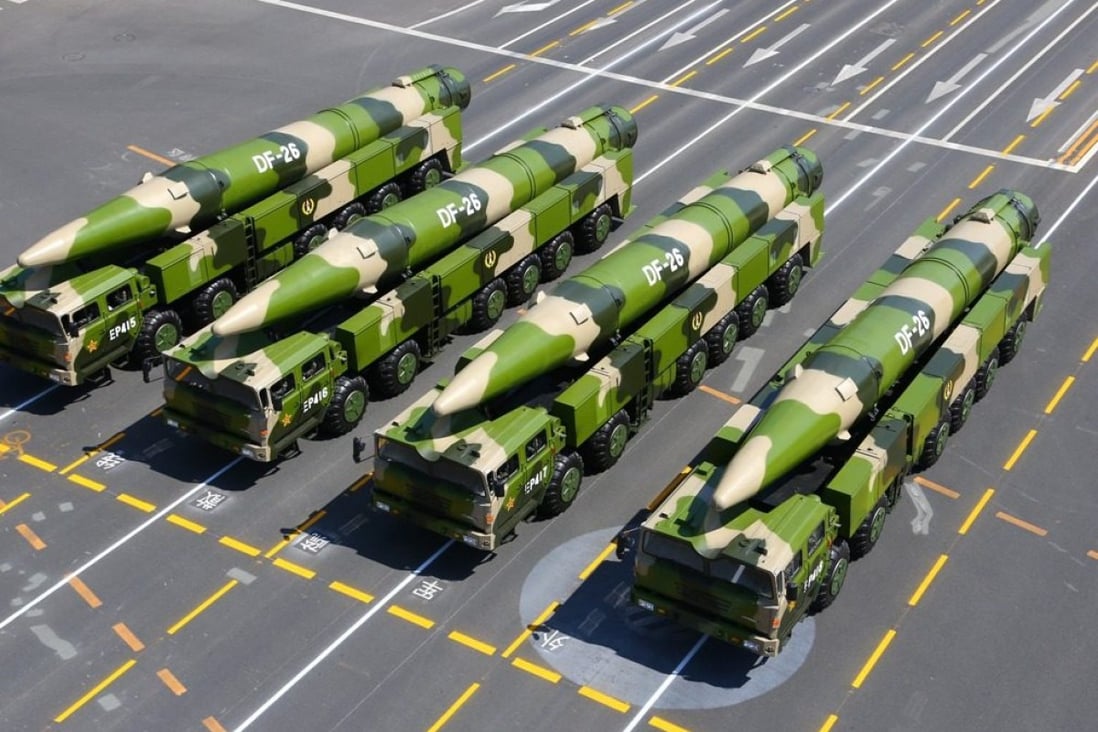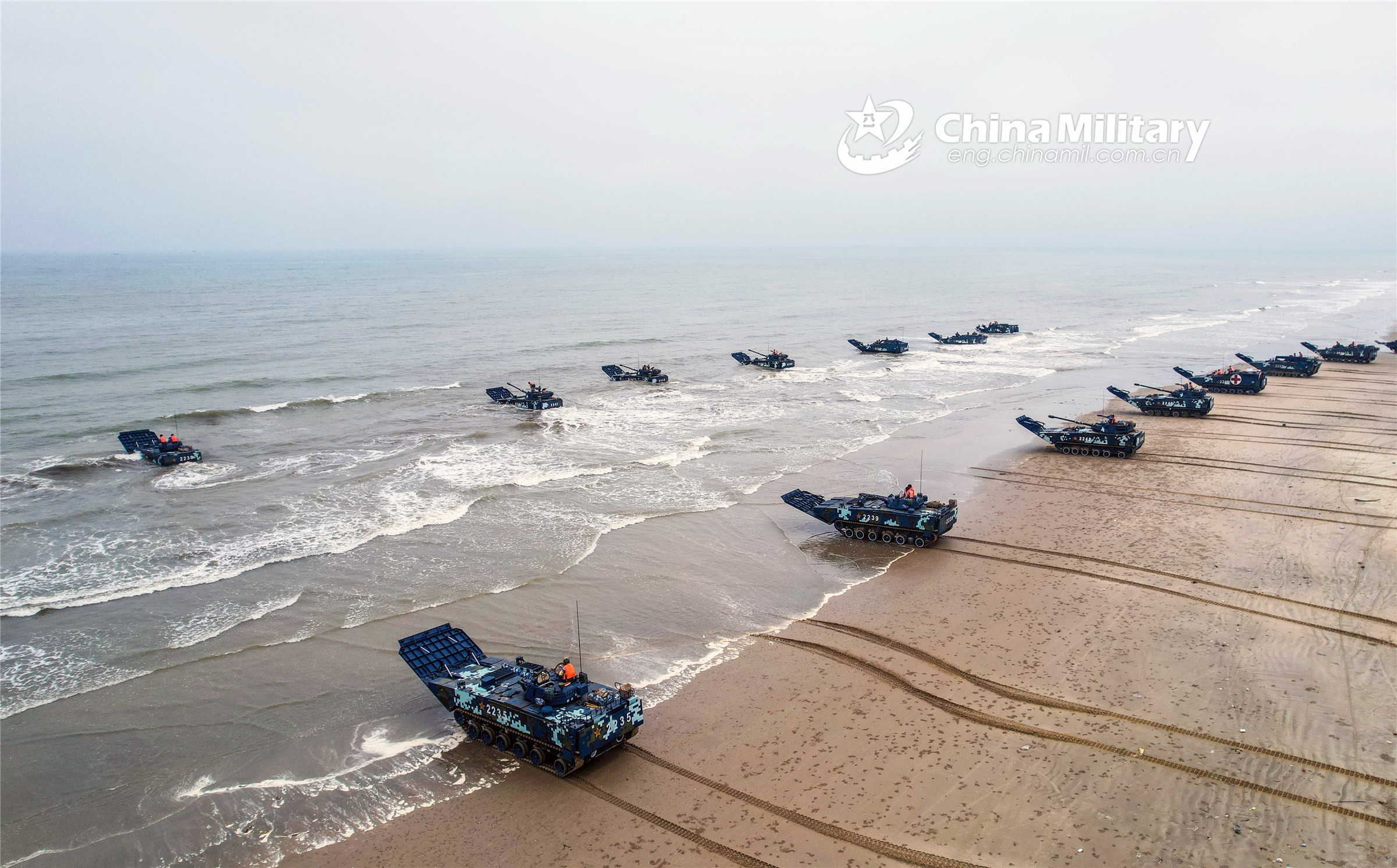A US Think Tank recently simulated a Chinese invasion of Taiwan in 2026 and published its results on January 9, which suggest that a conflict over Taiwan would result in thousands of casualties among Chinese, US, Taiwanese and Japanese forces, and China would likely lose the war.
The Washington DC-based Center for Strategic and International Studies (CSIS) conducted wargame simulations of a possible conflict over Taiwan, a matter of grave concern among military and political leaders in Asia and the US.
According to the results of the simulations, at the end of the conflict, at least two US aircraft carriers would be sunk in the Pacific, while China’s modernized People’s Liberation Army (PLA) Navy, the largest naval force in the world, would be in “shambles.”
Despite emerging victorious in the conflict, the US military would be left in a crippled state just as much as the defeated PLA forces.
These are some of the conclusions reached by the CSIS after having conducted what it describes as one of the most extensive wargame simulations ever conducted on a possible war over Taiwan, the island nation of 24 million that the Chinese Communist Party claims as part of its sovereign territory, and intends to reunify with the Chinese mainland.
CSIS ran two dozen war scenarios, the results of which were published in a report titled, ‘The First Battle of the Next War.’
The premier American think tank said that the project was essential because previous unclassified analyses either focus on one aspect of an invasion, are not rigorously structured, or do not focus on military operations, and classified wargames are not transparent to the public.
Without a suitable analysis, public debate will remain unanchored, said the CSIS report.
Findings Of The CSIS War Game
CSIS ran this wargame 24 times to address two fundamental questions: would the invasion succeed, and at what cost? The CSIS report said the probable answers to those two questions are no and enormous, respectively.
The results summarized in the beginning state that “the invasion always starts the same way,” which entails an opening bombardment that destroys most of Taiwan’s navy and air force in the first hours of hostilities.
Bolstered by the powerful PLA Rocket Force (PLAF), the PLA Navy would encircle Taiwan and intercept and prevent any attempts to get ships and aircraft to the besieged island. Tens of thousands of Chinese soldiers would cross the strait in a combination of military amphibious craft and civilian roll-on, roll-off ships while air assault and airborne forces land behind the beachheads.

However, according to CSIS, in the most probable baseline scenario, the Chinese invasion would quickly falter as the Taiwanese ground forces, despite the massive Chinese bombardment, would stream to the beachhead, where the invading troops struggle to build up supplies and move inland, meanwhile the US submarines, bombers, and fighter/attack aircraft, often backed by Japan Self Defense Forces (JSDF), rapidly cripple the Chinese amphibious fleet.
Also, even if China conducts strikes on Japanese bases and the US surface ships, the strikes will not be able to change the result, which is Taiwan remains autonomous, according to CSIS.
However, the CSIS report also notes that for the conflict to play out in the way mentioned above, Taiwan must resist and not capitulate. This is because some Chinese forces will always manage to land on the island, and Taiwanese ground forces must be able to contain any beachhead and counterattack forcefully as Chinese logistics weaken.

In addition, the report also notes that the Taiwanese ground forces have severe weakness and recommends that Taiwan fill its ranks and conduct rigorous, combined arms training. “Ground forces must become the center of Taiwan’s defense effort,” said the report.
“If Taiwan surrenders before US forces can be brought to bear, the rest is futile,” the report stressed.
Furthermore, the report also highlights the importance of the US role in the preparation of, and engagement in combat preparation, stating that “There is no ‘Ukraine model’ for Taiwan.”
According to the experts at CSIS, in peacetime, the US and Taiwan must work together to provide Taiwan with the weapons it needs, as Taiwan must start the war with everything it needs.
Unlike in the ongoing Russia-Ukraine war, where Russia has not been able to interdict the overland flow of weapons to Ukraine, China cannot isolate Taiwan for weeks or even months.
This is an important point considering the worsening backlog of weapons for delivery to Taiwan that has the US government officials and lawmakers concerned, as reported by EurAsian Times in November last year.
The backlog of arms deliveries to Taiwan, which was already more than $14 billion by December 2021, has now reached around $18.7 billion, according to US congressional officials.
However, the US establishment is taking measures to speed up the delivery. For example, US lawmakers passed legislation in December 2022 that will finance weapon sales and authorize the potential transfer of weapons to Taiwan from the US military’s own stockpiles. The legislation also requires the US government to accelerate arms transfer to Taiwan.
Also, the report urges the US to quickly engage in direct combat with China if Washington does intend to defend Taiwan because any delay or half measure by the US would make the defense harder, increase American casualties, and enable China to create a stronger lodgement, thereby increasing the risk of escalation.

Victory Might Come At A High Cost!
As stated above, even if CSIS’ wargame foresees a victory for the US and its allies, the success would come at a high cost. “The United States and Japan would lose dozens of ships, hundreds of aircraft, and thousands of service members. Such losses would damage the US global position for many years,” the report said.
In most scenarios, the US Navy typically lost two aircraft carriers and 10 to 20 large surface combatants. While the report estimates that around 3,200 US troops would be killed in three weeks of combat, nearly half of what the US lost in 20 years of war in Iraq and Afghanistan.
“China also suffers heavily. Its navy is in shambles, the core of its amphibious forces is broken, and tens of thousands of soldiers are prisoners of war,” the report said. The report estimates that China would lose 155 combat aircraft and 138 major ships, and about 10,000 troops would be killed.
While Taiwan’s military is unbroken, it is severely degraded and left to defend a damaged economy on an island without electricity and basic services, according to the report, which estimates that the island nation would suffer about 3,500 casualties and all of its 26 destroyers and frigates will be sunk.
Meanwhile, the report found that Japan would probably lose more than 100 aircraft and 26 warships while China attacks the US military bases on its home territory.
Is The War Over Taiwan Inevitable?
The CSIS also noted that its report does not imply a conflict over Taiwan “is inevitable or probable.”
“The Chinese leadership might adopt a strategy of diplomatic isolation, gray zone pressure, or economic coercion against Taiwan,” the report said.
According to Dan Grazier, a senior defense policy fellow at the Project on Government Oversight (POGO), an outright Chinese invasion of Taiwan is extremely unlikely because such a military operation would cause immediate disruption of imports and exports upon which the very survival of Chinese economy is dependent, and interrupting this trade risks the collapse of the Chinese economy in short order.
“The Chinese are going to do everything they can, in my estimation, to avoid a military conflict with anybody,” Grazier told CNN. Grazier believes that to challenge the United States for global dominance, they will use industrial and economic power instead of military force.

However, senior US defense officials consider China as the US’ ‘pacing threat’ and last year’s China Military Power report mandated by Congress said, “the PLA increased provocative and destabilizing actions in and around the Taiwan Strait, to include increased flights into Taiwan’s claimed air defense identification zone and conducting exercises focused on the potential seizure of one of Taiwan’s outlying islands.”
A recent instance of the PLA’s increased provocative and destabilizing actions was witnessed on January 8, when the PLA’s Eastern Theater Command conducted large-scale military exercises around Taiwan, which reportedly involved sending 28 warplanes across the median line of the Taiwan Strait.
According to Taiwan’s Defense Ministry, the 28 PLA aircraft included J-10, J-11, J-16, and Su-30 fighters, H-6 bombers, three drones, and an early warning and reconnaissance aircraft.
“The exercise focused on land strikes, sea assaults, and other subjects, aiming to test the troops’ joint combat capability and resolutely counter the collusive and provocative acts of the external forces and the ‘Taiwan independence’ separatist forces,” according to a statement posted on the state-run China Military Online.
- Contact the author at tanmaykadam700@gmail.com
- Follow EurAsian Times on Google News




